|
I'm gonna post some transformations and give a little info about them. So here's the first one. Occasionally I will see a photo somewhere of someone's head covered with foils, and there is always inevitably a random person who has to comment that "there is NEVER a need for that many foils". Which immediately tells me that this individual doesn't do color corrections or brights.
When you've got someone like Amber here, with longish hair that's already got some highlights in it, and she wants to be hot pink all over, guess what? You are foiling every hair on that head (a.k.a., "platinum carding"). When bleaching hair that is more than a few inches long, you start losing control of the process if you just slap bleach on like you would color; your roots will come out very light while your ends are likely to be stuck in the orange stage. With foils, you get a much more even lift because they help control the heat distribution and they keep the bleach wet. So, I start in the back on the bottom with a lower volume developer, I work upward and forward, and I gradually increase the strength of the developer (called "bumping" the developer) as I go along. This is to keep the processing time a bit more even, but also, getting that many foils in by myself takes a long time, so if the back gets done processing before the front, it's easy to rinse out if I need to. So that's what we did on Amber. The highlighted pieces only got bleached on the regrowth, and the rest got foiled all to hell. Then we rinsed (shampoo only), and I used Special Effects Atomic Pink on the majority of her hair. Four foils in the front: two each of pravana violet and SFX electric blue. Rinse with cold water, conditioner only. The end. Thanks for reading, and post any questions below!
5 Comments
Things That I Think
I went to buy groceries last night after work, and my feet started to hurt, as I had been standing on them all day, and the floor in the store was largely concrete. I initially felt irritated by it, but then reminded myself that there are people on the planet right this moment who are in wheelchairs because they don't even have feet to hurt. Or they are in the process of losing them or severely injuring them. Maybe someone just stepped on a mine. Maybe someone has an untreated infection and is getting gangrene. Maybe there are soldiers fighting in a war somewhere and they will be happy just to survive this minute that I share with them - a minute where I am in complete safety by the sheer luck of the draw. The laws of statistics tell me these things are surely happening to many people, that I share the same minutes with everyone on this planet, and the minutes tomorrow and the day after that, while I sit here whining to myself as I walk with my almost perfectly functional (and safe) body through a literal warehouse of food that I have enough money and resources to purchase for myself and my family. And when I'm done, I will go home to my above par shelter and sleep in a climate controlled room on a fluffy bed next to someone I love dearly with the full knowledge and an almost guaranteed certainty that we will all wake up alive and well-rested and well-fed and educated and healthy and safe and entertained and employed and everything else. It was easy to forget about my feet after I took all that into consideration. Take a walk outside some day when the weather is beautiful, or maybe when it's just so-so, and the breeze is blowing and the leaves are changing color and the air smells clean and is maybe even a little cold in your nose and lungs as you inhale it, and marvel that out of the vast size and age of the universe, you exist for this brief moment to uniquely experience that moment that will never occur again. Your molecules, that once belonged to stars and maybe even other planets like ours, and other life forms, have arranged to make you, and when you die, they will rearrange again to make other things. Isn't that nuts? Isn't it absolutely absurd that we even get to exist at all to think about or challenge it? When or if you struggle to find meaning, or you feel bored or irritated, try practicing mindfulness - just being in that moment and appreciating it for what it is - even the bad moments. There will come a point where we all will wish we had appreciated every single one of those moments more, because we know we are running out. I find that being more mindful has made me...grateful. To be able to feel anything at all is a brilliant miracle of some sort. 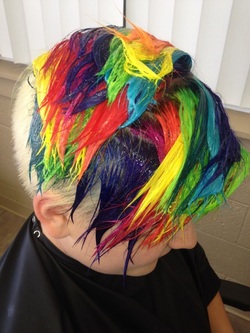 I get questions and commentary on this ALL THE TIME. In fact, almost any time I post a photo with multiple colors in it, the two main sentiments are, “How do you keep that from bleeding?” and, more annoyingly, “That’s gonna look great till she washes it.” There are actually a lot of simple solutions for this. First off, though, it should be noted that I also use color placement to my advantage, so bleeding is often either a non-issue, or is sometimes even desired to create a greater range of colors. However, that’s a subject for another article, so I won’t go into that here. So probably the most important factor with regards to bleeding is water rinsing temperature. Cold water closes the cuticle and traps nearly all the color molecules, preventing their escape. Hot water, conversely, opens the cuticle and lets a huge proportion of the color you just applied go all over the other colors and right down the drain. So, hot water is your enemy here. You will also want to make sure your clients continue to use cold water at home for maximum color separation and longevity, so it’s important to emphasize this as part of their care routine. And no need for cold showers, either; clip the hair up when showering/bathing, and wash it separately leaning over the tub so that only the scalp has to endure the frigidity. I also avoid shampooing after rinsing the color out. I prefer to give the majority of my color clients at least a 24 hour time frame before they can shampoo their hair; it seems to help the color set up better. Otherwise, the lathering and detergents just end up dislodging a lot of the color molecules, and they can end up stuck in other parts of the hair where you don’t want them. So, skip the shampoo on this service. If you’ve got color you’re really nervous about, find a good dry shampoo to retail to your clients for them to keep on hand. Otherwise, give them a sulfate free shampoo to minimize lathering and bleeding, and to maximize longevity and brightness. However, conditioner is okay, and recommended after a color service. Speaking of conditioner, it is also great to use as a color blocker. For instance, if there is hair that I want to stay relatively blonde near some brighter colors, then I will coat the blonde with conditioner during the coloring process, and then it can act as a protective barrier against the color when I rinse. There may still be some slight bleeding onto the blonde once the client starts shampooing at home, but it won’t be near the magnitude of what it would be with the actual dye still on the hair. This was what I used on Haley's blonde hair in the photo above. Occasionally, I may also rinse separately. This tends to consist of selectively removing foils, darkest colors first, and rinsing those before I move on to lighter pieces. I don’t do this often, however, simply due to my color placement strategies; it tends to be unnecessary. It’s also not always practical for your clients to do at home, either, unless there are only 2-3 very large sections and color mixing would be catastrophic. And honestly, I don’t consider bleeding catastrophic, because again, color placement eliminates this issue. But I also tend to hold the philosophy that the evolution and natural changes in the appearance of things is actually kind of cool. I let my clients know that sometimes, their hair will morph or change with each shampoo – and that’s good! It stays interesting, and it’s like getting a new or different color a couple times a week. Keep in mind, however, that agreement with this mindset is probably more likely among a rainbow clientele that changes their color often anyway; standard color clients may not be as impressed or pleased with it. My final strategy if I am feeling desperate or really worried is to let the color dry out on the hair. Yes, dry out. I will put them under the dryer and let all the moisture get sucked out until the color is no longer wet. When rinsing in this situation, you’ll notice that the water is almost completely clear. I discovered this on accident, but to be honest, rarely feel a need to use it. I am also not 100% clear on what effects that may have on the color itself with regards to longevity and other factors, so I would only use this strategy as a last resort. If you are a color educator for a particular brand, however, and you know whether this makes a difference on your color line(s), feel free to help us out in the comments. So that’s how I minimize bleeding. If you have any questions or comments, drop them in the comments below! 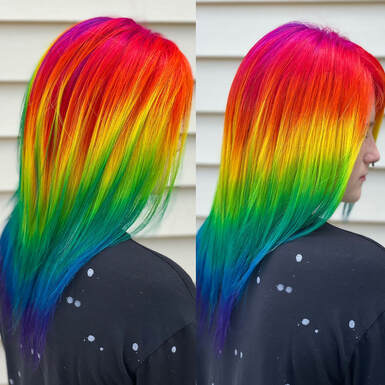 Practice some of these strategies yourself on <<<<<<this rainbow wig 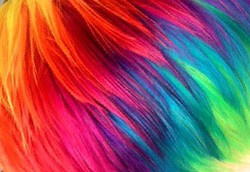 I’ve decided to write up a FAQ for hair color maintenance and routine - my own and my clients' - as I get asked about it a lot. 1. Isn’t that color a lot of work/maintenance/money/time to do that to your hair? It might be, if I kept the same multiple colors all the time and had to pay someone else to do it. For more complicated patterns, I tend to do it in stages over the course of a few days or weeks, so I rarely spend more than an hour or two on my hair at a time - I am super impatient. I don’t maintain any color scheme for longer than a few weeks; once it’s pretty faded, I just move on to something else. And it’s not expensive for me because at this point in my career, I have a huge inventory of color, and I certainly don’t have to pay myself for labor. In fact, as an independent contractor, the color of my hair actually saves me money, because it’s advertising for my services, which is a tax deduction! My clients all vary in their maintenance levels, color, and preferences, so I always try to give them something they can deal with and meet their needs. If they keep the same shade of blue all the time, then I use a long lasting blue so that they only have to come in every couple of months to touch up their roots. If they like to change color a lot, I will use colors that fade more easily instead. In terms of time, I spend as long as it takes to get them the color they want. Some people don't take more than an hour or two, most people take about 3 hours (I don't know why, this just seems to be the magic number for me), and then I occasionally get colors that can take anywhere from 6 to 10 hours to do. Naturally, longer and/or thicker hair takes more time, as does hair that's been processed before and needs very meticulous correction or lifting done on it before we can proceed. So yeah, sometimes it's a lot of work, but hey, this is my job, and I love it! The end results totally make it worth it. As for cost, I live in an area with a VERY low cost of living, so it's anywhere from $50-200 for a color. 2. My color fades really fast. What can I do? There are a lot of reasons this can happen. a. Dye quality makes a big difference; many mainstream dyes like Manic Panic are not meant to last a long time because they are formulated for people like me who change colors a lot. There are other brands like Ion, Special Effects, and Joico that can be annoyingly long lasting. So make sure you’re using the kind of stuff that meets your maintenance needs. Hair varies, too, so you may need to try a couple of brands before you find the one that lasts the longest for you. b. Product makes a huge difference. “Civilian” shampoos like Suave and Herbal Essences, and dandruff shampoos, will strip the color right out. Make sure you are buying a salon quality color safe shampoo with minimal or no sulfates (it will say “No Sulfates” on the label). They are worth the extra money to avoid having to re-color every two weeks - that’s going to cost you more in the long run, anyway. c. Washing and styling routines are pivotal, perhaps even the most important part of making your color last. Heat opens the cuticle on the hair shaft, which allows a lot of the color trapped underneath to come out (this rule applies to permanent color, also). Hot water is the worst culprit, so when you wash, try to use the coolest water you can. You should notice a substantial difference in color bleeding between hot and cold water temps. Frequent washing will also fade your color more quickly, and is not really necessary for most people, colored hair or otherwise. Most people can get away with shampooing every 2-4 days. Rinsing and conditioning every day is alright for most (although very fine hair may not appreciate that much conditioner, either). Flat ironing every day can fade color, too, plus, it’s super bad for your hair! Try to cut down to every other day, or wearing straight/curled hair once a week. Also, most color is UV sensitive, particularly blue color molecules, so lots of sunlight exposure can lighten hair very, very quickly, as can swimming in both chlorinated and salt water. So take these into account with your summer routines; wear a hat if you'll be outside for a while (this is good for your skin, too!), and if you are going swimming, get your hair damp and then saturate it with conditioner first. It won't completely eliminate fading, but it will help. Plus, the conditioner blocks chemicals and salts from being able to penetrate your hair. If you will be swimming for hours at a time, reapply it every couple of hours, the same way you would with sunscreen. d. Hair condition. If your hair is porous, which can be an outcome of processing (especially if it’s over-processed), it can soak up more color, like a sponge, but also, like a sponge, it won’t necessarily hold onto it very well. Typically, the ends of our hair are the most porous, so you might see faster fading on your ends than the rest of your hair. There is really no fix for this, and you will either need to mix up stronger color for the ends or color them more frequently to keep them even (although when this happens on my own hair, I don’t really bother). Once hair is damaged, it’s damaged until you cut it off. There are various restructuring treatments that provide a temporary fix, but the best way to avoid porous/damaged ends it to get regular trims, even if you are growing it out. Your hair grows about a half inch a month, so you can get about that much trimmed every 2-3 months and still get growth. 3. What do you use on YOUR hair? I’m pretty low maintenance, actually, because I (luckily) have coarse, textured hair and it pretty much does what I want it to in regards to style, volume, and shape. I shampoo once or twice a week (although I may condition more frequently if the air is really dry or I think I need it). I will usually style it with a 1 inch barrel Marcel curling iron after it air dries, and - not exaggerating - it will stay curled like that till I wash it again with few or no touchups required. I will usually leave a little conditioner in it after I wash (I prefer TIGI Dumb Blonde or Colour Goddess, or Biolage Hydrating Balm for coarser textures like mine; both of those may be too heavy for finer or thinner hair) and then while it’s still wet apply a little virgin coconut oil or Sexy Hair's Soy Renewal Argan Oil. I rarely use any other product on my hair. I also have a ton of hair and it is naturally curly, so I don’t need any volumizing products or backcombing; if my hair looks huge in a photo, it’s because I didn’t try harder to tame it down. A tutorial on the specifics of how I style my hair can be found under my videos tab. As for color, I use whatever works, although I will dilute stronger colors so that they wash out more quickly (this is so I can change my color more frequently). For myself and clients both, I work with several different brands/lines of color, including, but not limited to, Manic Panic, Special Effects, Pravana, Ion Brights, Zombie Snott, Iroiro, Pulp Riot, N'Rage, Chi, Redken, Framesi, Joico, and probably a bunch of others I'm forgetting. 4. How do you prevent your colors from bleeding together/won’t your rainbow hair look gross the first time you wash it? Like I mentioned above, cold water will really help with that. BUT, when I do multiple colors, I expect bleeding and use it to my advantage. For instance, most of the rainbow hair I’ve ever done I just used primary colors, and then let them bleed together to make the secondary colors. A lot of colors look pretty when they bleed together, so I just try to make good color placement decisions and then I don’t have to worry about bleeding. If you’re not sure which colors go well together, think of it like mixing paint; the same color theory rules apply. 5. How do you keep you and your clients' hair so healthy? It’s not perfectly healthy; after all, I do have to bleach it first before I color it, and bleach is fairly hard on the hair. What I DON’T do, though, is bleach hair that’s already been bleached. Only regrowth gets bleached. I am a natural strawberry blonde, so (luckily again) it’s pretty easy for me to get to white blonde in one single process. However, I see a lot of girls who do their own hair bleaching the crap out of it - bleaching the same hair over and over again- and it fries their hair. DON’T DO THAT!!! Much of the time, it is an attempt to get an old hair color out in order to add a new one. The trouble with this is that it doesn’t always work (I’ve seen purple color turn green from bleach, and some colors get driven further into the cuticle with bleach), and it absolutely destroys your hair. Bleach basically puts microscopic holes in your hair every time you use it. A few of these holes isn’t going to be a huge deal, but what happens to something if you keep adding more holes? Eventually, there are more holes than hair left, and you will experience breakage and permanent frizziness. Just bleach the regrowth. And if you have resistant, very dark, or very thick hair, it'd pretty helpful and totally worth to just have a pro do it, and then do your own color at home afterwards. And no, the bright colors aren’t damaging. They are pretty much just pigmented conditioner. Shampooing less frequently helps keep it from getting dried out and frizzy. I tend to co-wash my own hair, which is washing with conditioner, unless I am specifically trying to fade my color out. Conditioner has enough detergent in it to get your hair clean (you have to use a lot, though), but not enough that it strips your natural oils or color. 6. Then how do you change colors so often if you don’t remove the old color? Sometimes I just let it fade; a lot of colors make nice pastels. Other times, I make new color schemes with the old ones; like I mentioned above about bleeding, it’s like mixing paint. So I can take faded pink, slap some yellow on top of it, and make orange. Or blue to make purple. It’s mainly just a matter of patience and planning, neither of which I’m very good at, so I totally understand y’all who just have to have new color RIGHT NOW. But please, for Thor’s sake, do anything but bleach it! 7. I really don't like your hair and/or your work on clients. Then I guess...don't look at it? There's a good chance I don't like your socks, but it doesn't really matter, does it? That should pretty much cover it for now. Can y'all think of any others? |
Sometimes, I write.
Various brain regurgitations will go here. Categories
|
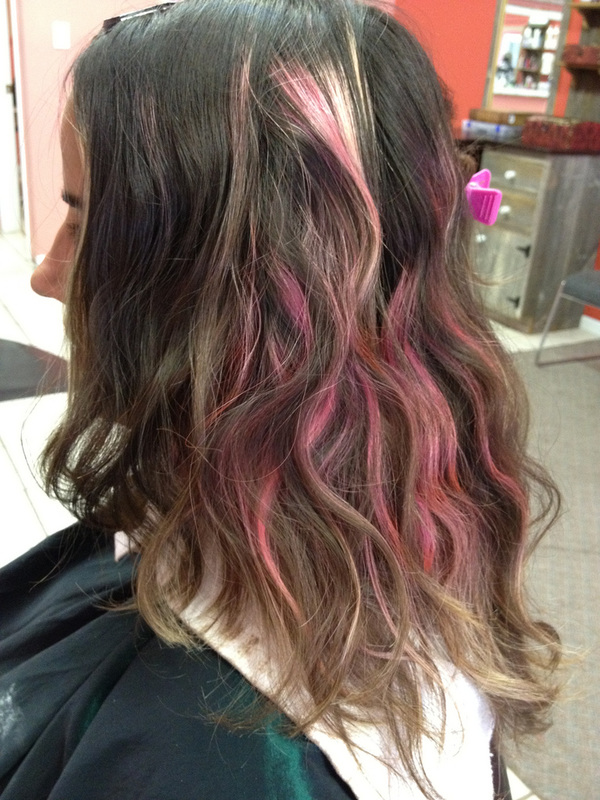

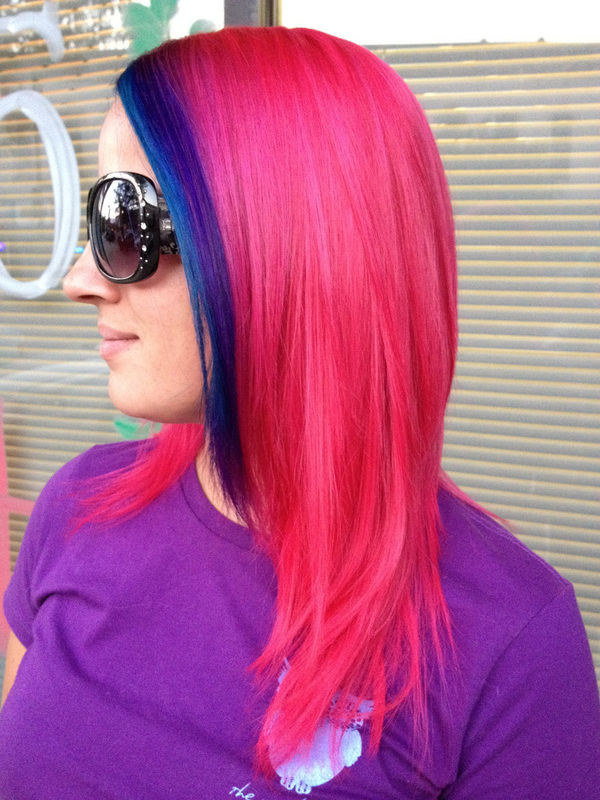

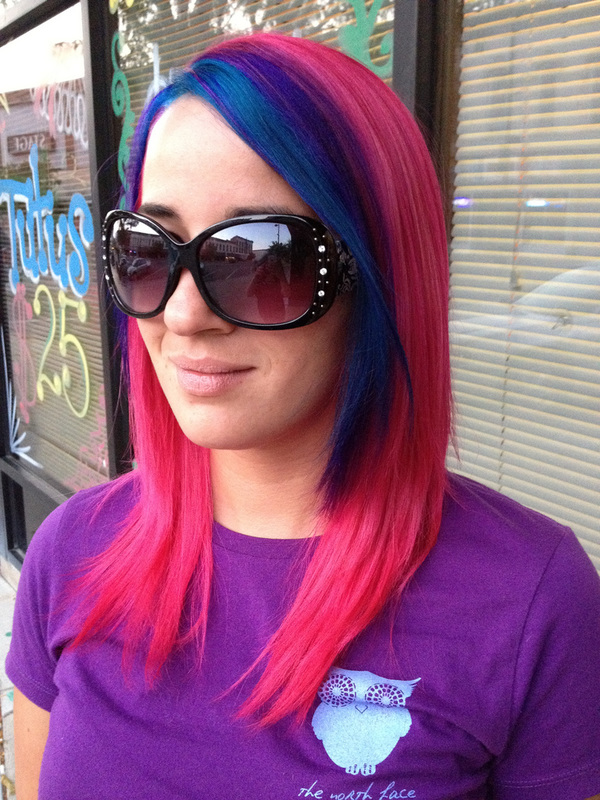
 RSS Feed
RSS Feed